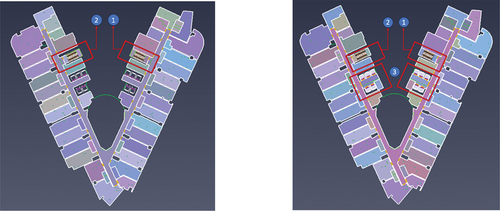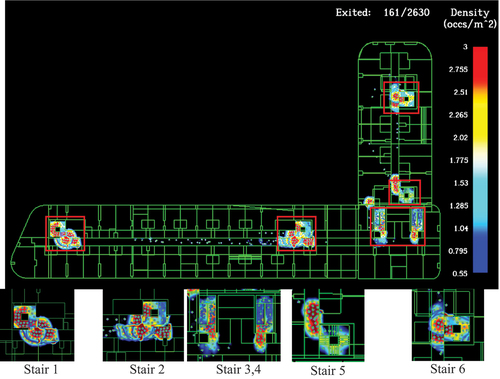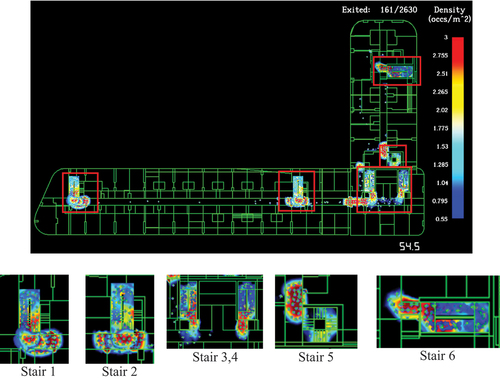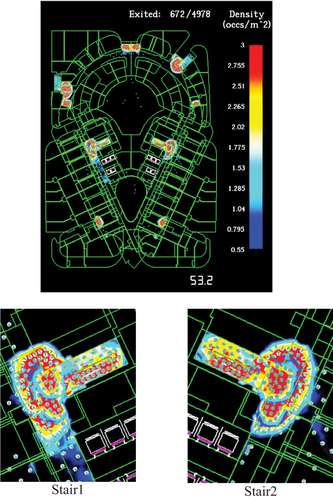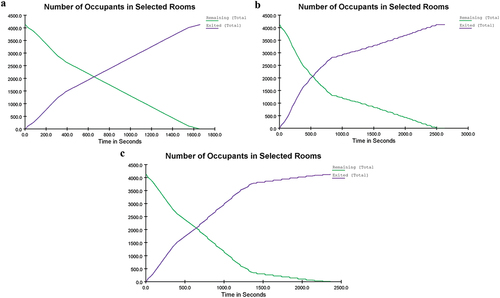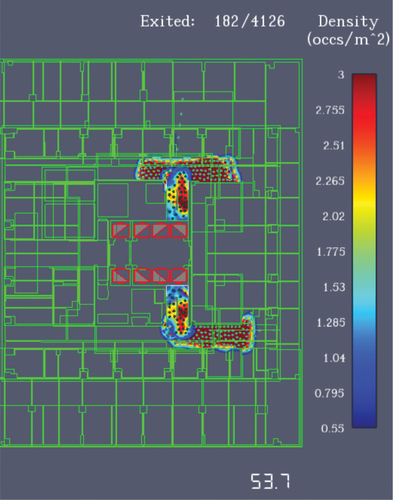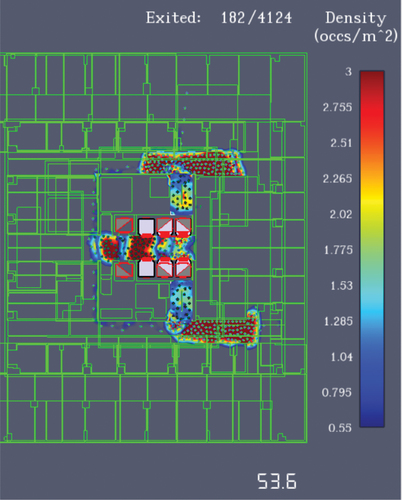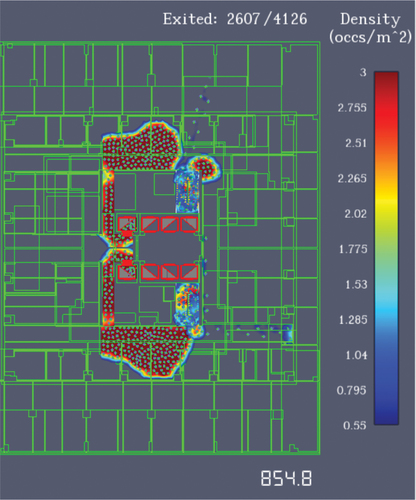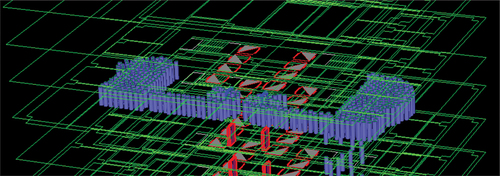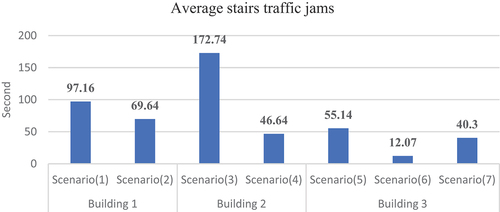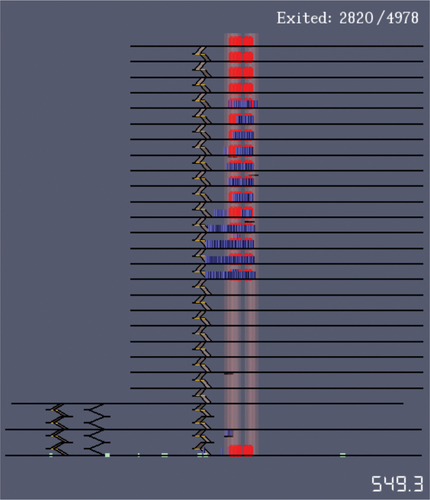Figures & data
Table 1. High-rise/super high-rise building classification.
Table 2. Description of emergency evacuation scenarios.
Table 3. Comparison of refuge floor location among countries.
Table 4. Description of the buildings.
Table 5. The architectural requirements of the Egyptian code for protecting buildings from fire and international codes.
Table 6. The constraints and determinants of the study.
Figure 2. The change of the type of the staircases (No:1, No:2, and No:6) in the typical floor for scenarios (1), and (2).

Table 7. The occupants’ behavior for scenario 1, and 2.
Table 8. The occupants’ behavior for the for scenario (3), and (4).
Table 9. The occupants’ behavior for scenario (5), (6), and (7).
Table 10. The (Tmove) for the commercial floors in the three buildings.
Table 11. The requirements for refuge areas.
Table 12. The requirements for the elevators.


